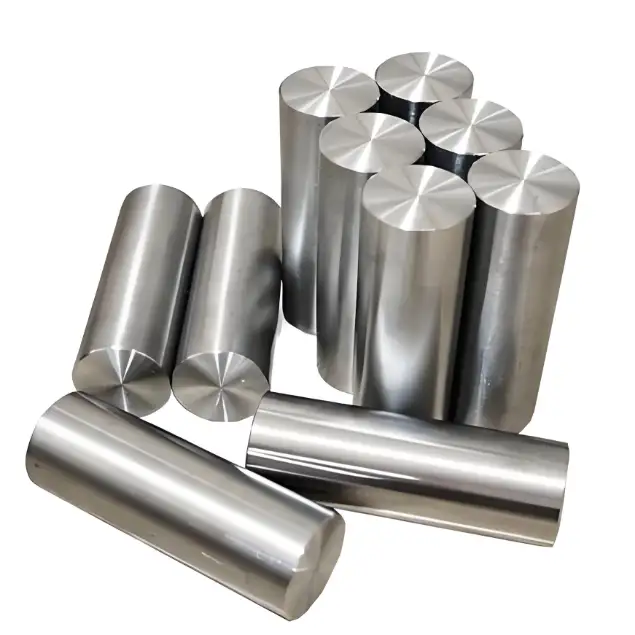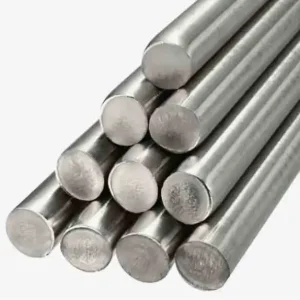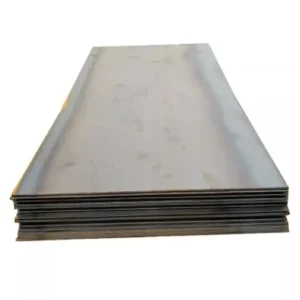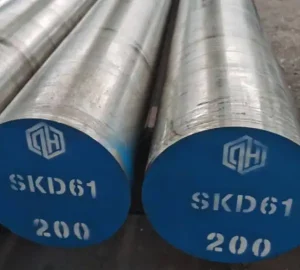Hastelloy C-276 round bar (UNS N10276 / W.Nr. 2.4819) is a high-nickel, chromium-molybdenum-tungsten alloy chosen when severe chemical corrosion resistance and reliable weldability are required. For corrosive chemical processing, chloride-bearing environments, and mixed oxidizing/reducing media, C-276 offers one of the broadest service envelopes of commercially available corrosion-resistant alloys. MWAlloys supplies certified Hastelloy C-276 round bars from Chinese mills at factory pricing, stocked for fast delivery to global customers.
What is Hastelloy C-276 round bar?
Hastelloy C-276 is a wrought nickel-chromium-molybdenum alloy with tungsten that combines exceptional resistance to pitting, crevice corrosion and stress-corrosion cracking in a wide range of media; the round bar form is supplied for machined components, shafts, shafts for chemical service, valve stems, fasteners, and custom forgings. The alloy retains corrosion resistance in both oxidizing and reducing environments and resists chloride-induced attack that damages many stainless steels. Major alloy producers publish extensive data showing C-276’s long track record in chemical process systems.
Practical buyer note: Choose C-276 round bar when project conditions include mixed acids, oxidizing halide solutions, high chloride content, or environments where welded components must maintain full corrosion resistance in the heat-affected zone.
Key performance summary
-
UNS designation: N10276; W. No.: 2.4819.
-
Typical density: ≈ 8.89 g/cm³ (0.321 lb/in³).
-
Corrosion behaviour: Excellent resistance to pitting, crevice corrosion, and stress-corrosion cracking across oxidizing and reducing environments.
-
Weldability: Very good in the as-welded condition due to low carbon and controlled impurities. Post-weld solution treatment not normally required for corrosion resistance.
-
Typical tensile & yield: Room-temperature values for annealed material typically show ultimate tensile strength ~690–790 MPa (100–115 ksi) and 0.2% offset yield ~310–355 MPa (45–52 ksi), depending on product form.
Chemical composition (typical ranges)
The composition below represents typical continuous-cast/wrought limits used by major producers. For contract work, always specify the certified mill test report (MTR) values.
| Element | Typical composition (wt%) — Hastelloy C-276 (typical ranges) |
|---|---|
| Nickel (Ni) | Balance (approx. 55–59%) |
| Molybdenum (Mo) | 15.0 – 17.0 |
| Chromium (Cr) | 14.5 – 16.5 |
| Iron (Fe) | 4.0 – 7.0 |
| Tungsten (W) | 3.0 – 4.5 |
| Cobalt (Co) | trace — up to ~2.5% (varies by producer) |
| Manganese (Mn) | ≤ 1.0 |
| Silicon (Si) | ≤ 0.08 |
| Carbon (C) | ≤ 0.01 (very low to preserve weld corrosion resistance) |
| Phosphorus (P) | ≤ 0.025 |
| Sulfur (S) | ≤ 0.01 |
Notes: Exact limits are defined in product standards (e.g., ASTM B574/B575/B619 for bars, rods and fasteners) and in mill specifications published by Haynes, Special Metals and other high-performance alloy makers. The high Mo and W contents create resistance to localized attack; the very low carbon reduces carbide precipitation on welding.
Material & mechanical properties
Below are representative properties used for design and procurement. Always use supplier MTR values for final calculations.
| Property | Typical value (room temp, annealed) |
|---|---|
| Density | 8.89 g/cm³ (0.321 lb/in³) |
| Modulus of elasticity | ≈ 205 GPa (29,700 ksi) |
| Ultimate tensile strength (annealed) | ~690–790 MPa (100–115 ksi), product dependent |
| 0.2% offset yield | ~310–355 MPa (45–52 ksi) |
| Elongation (50 mm) | Typical ≥ 40% (good ductility) |
| Melting range | Approx 1370°C (≈ 2500°F), solidus/liquidus vary by producer. |
| Thermal expansion (20–100°C) | ~11.2 µm/m·°C (approx. reference) depending on source. |
Hardness and typical heat states
Hastelloy C-276 is normally supplied annealed or solution treated. Hardness depends on cold working and heat treatment.
-
Typical annealed hardness: Rockwell B ~82–95 HRB (approximately Brinell 150–210 HB or Vickers 160–220 HV in many stock charts).
-
Cold-worked or spring-temper conditions can produce much higher hardness and tensile properties; for spring or highly cold-worked states, tensile strength and hardness can increase dramatically (consult producer temper tables).
When specifying components that require specific hardness or strength, state whether you require annealed, cold-drawn, or specified tensile/hardness limits on the PO.
Hastelloy C-276 equivalents and trade names
-
UNS: N10276.
-
W. No. (EN/DIN): 2.4819.
-
Trademark / trade names: HASTELLOY® C-276 (Haynes International), INCONEL® Alloy C-276 (Special Metals has historically referenced similar grades) — check brand/trademark usage and mill of origin for MTR traceability.
Do not substitute blindly: Some suppliers offer "C276 equivalents" from regional mills; confirm chemistry and MTR traceability before acceptance for critical service.
Specifications, certifications and common standards (round bar)
Common product standards that buyers reference when purchasing C-276 round bar or rod:
-
ASTM B574 — Standard Specification for Nickel- and Nickel-Iron-Chromium-Molybdenum-Tungsten Alloys (for bars, forgings etc.).
-
ASTM B575 — Nickel and Nickel Alloys (Rolled or Cold-Worked Strip, Sheet, and Plate) — sometimes cited for strip/coil.
-
ASTM B619 — Nickel alloy bars and rods for general engineering use.
-
ISO / EN equivalents: check EN material number 2.4819 and ISO specifications.
-
NACE/ISO 15156 (NACE MR 0175) — for sour environment suitability; some C-276 product forms are used in sour service; confirm NACE acceptance per MTR and heat treatment.
When placing orders, specify the ASTM/EN product spec, required test reports (chemical, mechanical, PMI, intergranular corrosion where applicable), surface finish, length tolerance and any special machining or straightness requirements.
Size & weight — practical table (density used: 8.89 g/cm³)
Use the table for quick procurement and lifting estimates. Values are weight per 1 m length and lb per ft for common diameters of solid round bar.
| Diameter (mm) | Weight (kg/m) | Weight (lb/ft) |
|---|---|---|
| 6 mm | 0.2514 kg/m | 0.169 lb/ft |
| 10 mm | 0.6982 kg/m | 0.469 lb/ft |
| 12 mm | 1.0054 kg/m | 0.676 lb/ft |
| 16 mm | 1.7874 kg/m | 1.201 lb/ft |
| 20 mm | 2.7929 kg/m | 1.877 lb/ft |
| 25.4 mm (1") | 4.5046 kg/m | 3.027 lb/ft |
| 30 mm | 6.2840 kg/m | 4.223 lb/ft |
| 50 mm | 17.4555 kg/m | 11.729 lb/ft |
| 100 mm | 69.8219 kg/m | 46.918 lb/ft |
| 200 mm | 279.2876 kg/m | 187.673 lb/ft |
Formula used: weight = density (8,890 kg/m³) × cross-sectional area × 1 m length. Density reference: major alloy datasheets.
Global price snapshot 2025
Nickel-based superalloys are priced on metal indices, alloy premia and producer availability. Prices move with nickel and molybdenum markets and regional demand/supply.
High-level 2025 indicators (examples / typical ranges):
-
China (FOB / ex-works) — typical quoted range for C-276 raw material and small-lot round bars: USD 30–40 / kg (USD 30,000–40,000 / MT) according to recent FOB Shanghai offers.
-
North America (delivered ex-dock or domestic quotes) — industry index readings Q1–Q2 2025 show ~USD 51,000–52,000 / MT for some C-276 forms; that converts to roughly USD 51–52 / kg. Wholesale/stock bar premiums, machining and testing add to the final price.
-
India / Middle East / UAE — distributor quotes vary; sample supplier listings in 2025 show USD 40–75 / kg depending on quantity, form and certification.
| Region / market | Typical 2025 indicative price (USD) |
|---|---|
| China (FOB Shanghai) | $30–40 / kg (FOB quotes for plate/rod) |
| North America (index) | ~$51,000 / MT → $51 / kg (Q1-Q2 2025 index snapshot) |
| Europe (stockist) | $45–70 / kg (distributor, small lots) |
| India / UAE (distributor) | $40–75 / kg (varies by MOQ & certification) |
Buyer tips for price control
-
Bulk orders and regular contracts provide the best unit rates.
-
FOB Shanghai and EXW China figures exclude freight, import duties, machining, NDE and MTR testing.
-
For critical service, pay for certified MTRs and third-party inspection rather than selecting lowest price only.
(Market data sources: industry price indices and supplier quotes; prices change rapidly — always request current quotes.)
Fabrication, welding and testing
-
Welding: C-276 is intentionally designed for weldability: low carbon and controlled silicon reduce HAZ sensitization. Preferred filler metals include matching C-276 weld wire (INCO-WELD Filler C-276) or similar nickel-chromium-molybdenum filler systems. GTAW (TIG) and GMAW (MIG) techniques commonly used; good shielding gas coverage recommended. Post-weld solution anneal is usually not required to restore corrosion resistance; follow mill and welding procedure specifications.
-
Machining: C-276 is tougher than common stainless steels and is abrasive owing to Mo/W content; use rigid set-ups, sharp carbide tooling, and reduced chip load. Use flood cooling and plan for slower cycles than carbon steel.
-
NDE & testing: Require chemical and mechanical MTRs (EN 10204 3.1/3.2 where applicable), PMI verification for critical orders, and optionally intergranular corrosion testing if project standards call for it.
-
Surface finish & passivation: C-276 generally does not require passivation like stainless steel, but pickling and clean water rinses after welding are standard practice in chemical plant fabrication.
Typical applications and common failure modes
Applications
-
Chemical process equipment (reactors, piping components, mixers) handling mixed acids and chlorides.
-
Pollution control systems and flue gas desulfurization components.
-
Marine and desalination equipment exposed to aggressive brines.
-
Valves, shafts, fasteners, and instrumentation in process plants.
Failure modes to watch
-
Improper material substitution (using lower Mo/W alloys) that leads to localized attack.
-
Inadequate weld procedures or use of incompatible filler metal can produce weak HAZs.
-
Mechanical overloading or fretting corrosion in poorly supported shafts or studs.
Why choose MWAlloys for Hastelloy C-276 round bar?
MWAlloys provides direct-from-mill procurement from reputable Chinese producers with:
-
Factory pricing: We sell at 100% factory price principle for standard stock items; quote includes MTRs on request.
-
Stock availability: Common diameters and lengths kept in regional stock for quick global dispatch; lead times for stocked items are typically shorter than specialized forged orders.
-
Traceability: Each shipment includes full MTR and certificate to support critical service acceptance.
-
Quality control: Pre-shipment PMI and mechanical test verification available; optional third-party inspection on request.
-
Technical support: MWAlloys offers consulting on temper, machining allowances and welding procedures to optimize component lifetime.
Frequently Asked Questions
-
What is the difference between “Hastelloy” and “C-276”?
“Hastelloy” is a brand family (Haynes trademark) for nickel-based corrosion-resistant alloys; C-276 is a specific alloy grade within the broad family (UNS N10276). Many mills also produce C-276 chemistry under other trade names; verify MTR traceability. -
What does UNS N10276 mean?
UNS N10276 is the Unified Numbering System designation corresponding to alloy C-276; the EN/W-No. equivalent is 2.4819. -
What hardness should I expect for annealed bar?
Typical annealed hardness lies near 82–95 HRB (roughly 150–210 HB) depending on mill finishing and cold work. -
Is C-276 suitable for welded assemblies without post-heat treatment?
Yes — one of C-276’s strengths is retention of corrosion resistance in the as-welded state; use matching fillers and approved WPQRs for critical assemblies. -
How do I specify a procurement order?
Include: material grade (C-276 / UNS N10276), ASTM/EN spec (e.g., ASTM B574/B619), diameter, length, surface finish, required MTR type (EN 10204 3.1/3.2), and quantity. Ask for PMI if vendor chain-of-custody is critical. -
Are there common equivalents to C-276?
Some alloy producers label similar chemistries under trade names; the formal equivalents are found under UNS N10276 / EN 2.4819. Always compare full certified chemistry and mill heat numbers. -
What operating temperature limits apply?
C-276 maintains corrosion resistance across a wide temperature window; oxidation and creep considerations depend on temperature range — consult full datasheet for temperatures above ~400–500°C. -
How is price formed for bar material?
Price depends on commodity metal indices (nickel, molybdenum), mill capacity, form (bar vs plate), lot size, and certification. Request up-to-date quotations. -
Can MWAlloys supply certified MTRs and inspection?
Yes — all factory lots ship with MTRs; third-party inspection can be arranged at order placement. -
When should I select other alloys (e.g., C-22 or Inconel 625) instead?
Select C-22 for enhanced oxidizing resistance in some niche cases; Inconel 625 offers superior mechanical strength at elevated temperatures for some applications. Material selection must balance corrosion chemistry, temperature, mechanical load and cost.





